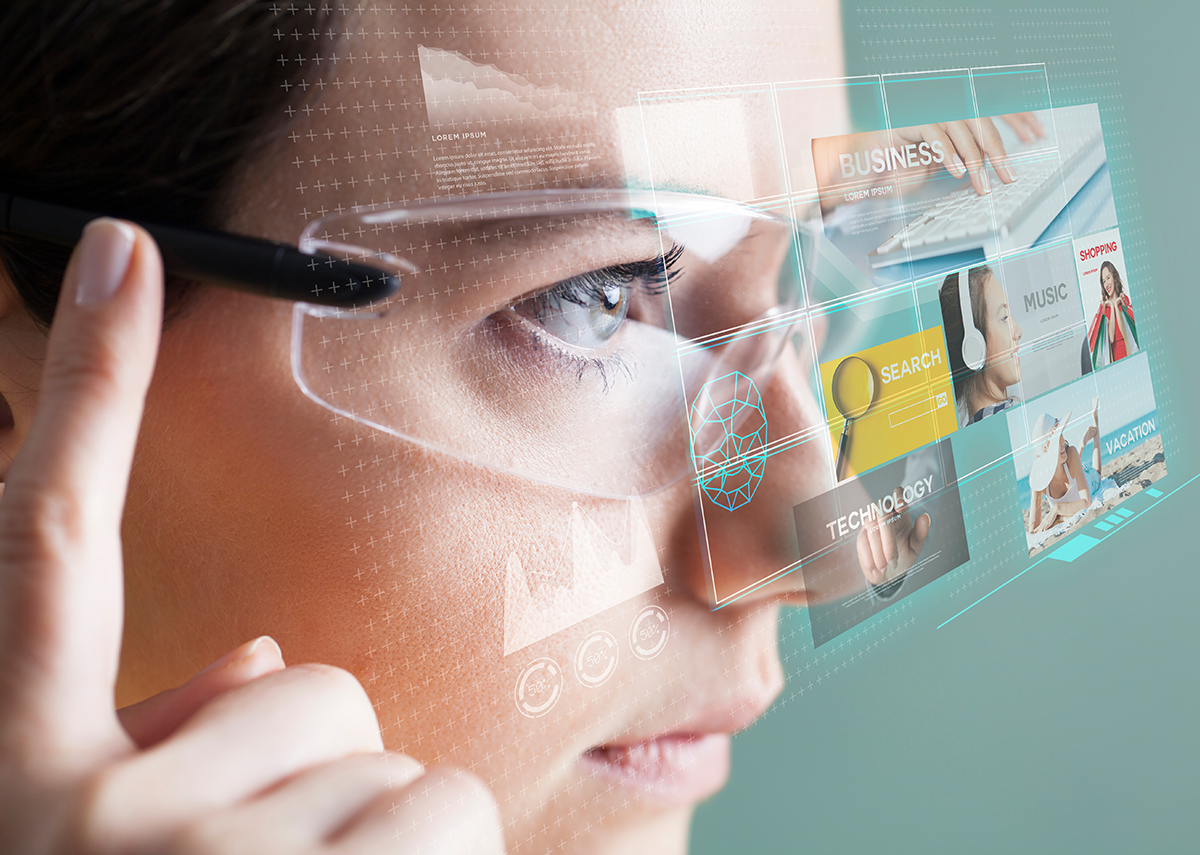The Power of Xtended/Extended Reality – Short insight
There are a lot of terms, some of which are confusing because some people don't know exactly when and how the respective terms are used or used. This has to do with the development of this technology, which is partly the same but only has differences in details.
- XR: Extended Reality / Cross Reality – Augmented Reality
- MR: Mixed Reality / Augmented Virtuality – Mixed Reality – Mixed Reality
- AR: Augmented Reality – extended reality
- VR: Virtual Reality – Virtual Reality
- ITe: Immersive technology
- Vi360: 360° video
- RR: Real Reality – physical reality
Suitable for:
- Extended Reality potentials and areas of application
- Continuous improvements and further developments in extended reality
VR: Virtual Reality - Virtual Reality
In the beginning there was virtual reality. The first draft of a VR system comes from Morton Heilig (1956), who developed an apparatus called Sensorama that should become the “Cinema of the Future”. The presentation and simultaneous interactive and virtual environment in a self -contained room are referred to as a virtual reality. Interaction in real time and 3-D are a prerequisite.
AR: Augmented Reality –
Augmented Reality added another technology and possibility. Namely the integration of virtual objects or other virtual interaction options into real reality. An example is the display of the speed display on the windshield of the car. There are also many well-known apps that allow you to view things or objects in real reality via your cell phone.
🏢 👨🏻 👩🏻 Digital services for your company - locally and globally
We work in the area of business development and help you strengthen and expand the market.
We look forward to seeing you!
🚀 👧🏽 👦🏽 For agencies that can use our help
We support you in strategic questions, regionally and internationally. Project-based or comprehensive.
MR: Mixed Reality – Augmented Virtuality – Mixed Reality
Mixed Reality is similar to Virtual Reality. The difference is that there is no self-contained virtual space, but you can interact in real reality using a glasses headset. The best-known example of this is Microsoft's HoloLens. Strictly speaking, this is augmented virtuality. Mixed reality, mixed reality or mixed reality are environments or systems that mix a user's natural perception with artificial perception.
XR: Extended Reality / Cross Reality – Augmented Reality
XR is the umbrella term for all immersive technologies. One speaks of an immersive virtual environment if the user is able to interact directly with it.
Just stupid that we use the same translation for “expanded” in German for “extended” and “augmented”.
Ite: Immersive technology
is immersed by the word “immersion” that stands for embedding an object into a different/new environment. In astronomy z. B. for the entry of a celestial body in the shadows of another or embedding one object into a liquid for examining in microscopy. In the area of digitization, it is for immersing in a virtual environment.
Immersion describes the embedding of the user in the virtual world. The perception of oneself in the real world is reduced and the user feels more like a person in the virtual world. The more immersive a VR experience is, the more realistic it feels to the user. This can be achieved through a sophisticated and exciting design of the virtual world, for example through a high number of possible actions in the system.
Vi350: 360° video
For the sake of completeness, the 360° image or video should be mentioned here. No interactions are possible here.
There are many possible applications for the various XR techniques that have now become established in industry and the entertainment sector.
The latest development is the provision and management of data in a central location for various XR applications, which, depending on the device, plays out the data for the corresponding XR application.
For example: a virtual showroom or a virtual trade fair for products, e.g. B. Machines
- PC/laptop: Display in the web browser as a 3D view.
- Smartphone: Display as an augmented reality version by showing the machine in the RR.
- VR glasses or smartphone with cardboard: representation of the products in virtual reality.
In addition, corresponding communication channels and other information options can be displayed via the respective devices.
Suitable for:
- Current status of Virtuality (Digital Showroom & Virtual Fairs)
- Augmented reality in the digital-physical world
- Extended Reality (XR) Library (PDF)
Predicted share of spending on augmented and virtual reality (AR/VR) worldwide
In 2020, consumer spending on augmented and virtual reality (AR/VR) is expected to account for 53 percent of global AR/VR spending that year. Total AR/VR spending worldwide will reach $12 billion in 2020 and grow to $72.8 billion by 2024.
Share of global AR/VR spending by segment worldwide
- 53% – Consumers
- 15.8% – Sales and Services
- 13.8% – Manufacturing and Resources
- 12.7% – Public sector
- 3.2% – infrastructure
- 1.6% – Other
XR/AR/VR/MR technology and content investment priorities worldwide
XR/AR/VR/MR technology investment directions worldwide: In January 2019, 54 percent of respondents said the gaming sector will see the most investment in the development of virtual reality (VR), augmented reality ( AR) and Mixed Reality (MR) technologies or content. Sectors such as healthcare and education have also become notable investment targets as the use cases of extended reality (XR) technology have evolved.
Augmented Reality (XR)
Extended Reality (XR) is an emerging term for all immersive technologies, including VR, AR and MR, as well as those that still need to be created. Immersive or XR technologies expand the reality that we experience by either fusion of the virtual and “real” world or by creating a completely immersive experience. VR creates an artificial environment, while AR simply uses the existing environment by providing new information about it. In both VR and AR, the information or images are made available to the user via headsets, whereby Oculus VR and Sony are among the well -known providers.
Suitable for:
XR consumption
The market for XR technology is growing, large companies such as Microsoft and Intel are investing in XR technology. The number of mobile AR users worldwide is expected to increase, fueled in part by the growing desire for AR technology to improve consumer experiences in media and entertainment. Music concerts and sporting events are just two examples where AR technology is increasingly being used to enrich the fan experience.
In 2016 and 2018, the following question in the survey referred only to AR and VR, without considering MR and XR products and services. Multiple entries were possible.
Which sectors do you expect to see the most investment in the development of AR/VR/MR/XR technology or content in the next 12 months?
2019
- 54% – Gaming
- 43% – Healthcare and medical devices
- 36% – Education
- 28% – Military and Defense
- 20% – Manufacturing and Automotive
- 17% – film and television
- 15% – Live events (e.g. sports, concerts, etc.)
- 15% – Workforce development
- 13% – Marketing and Advertising
- 11% – retail (e.g. shopping)
- 9% – Real Estate (e.g. virtual tours, construction)
2018
- 59% – Gaming
- 26% – Healthcare and Medical Devices
- 26% – Education
- 19% – Military and Defense
- 17% – Manufacturing and Automotive
- 18% – film and television
- 19% – Live events (e.g. sports, concerts, etc.)
- 20% – Marketing and Advertising
- 18% – retail (e.g. shopping)
- 21% – Real Estate (e.g. virtual tours, construction)
- – Workforce development
2016
- 78% – Gaming
- 24% – Healthcare and Medical Devices
- 30% – Education
- 15% – Military and Defense
- 40% – film and television
- 34% – Live events (e.g. sports, concerts, etc.)
- 7% – retail (e.g. shopping)
- 18% – Real Estate (e.g. virtual tours, construction)
- – Manufacturing and automotive engineering
- – Workforce development
- - Marketing and advertisement
Suitable for:
Monetization strategies for immersive technology products or services
Selling products or subscriptions was identified as the primary method of monetizing XR/AR/VR/MR products and services in 2020, with 61 percent of XR industry experts surveyed citing this strategy. Compared to the previous year, this strategy has increased by 13 percent.
In 2018, the survey question focused only on AR and VR, without considering MR and XR products and services.
Monetization methods for XR/AR/VR/MR products or services worldwide
2020
- 61% – Sales of products or subscriptions (e.g. AR/VR devices, games)
- 51% – Charges for additional features or in-app purchases within apps that are free to download
- 47% – revenue from advertising within apps
- 47% – Product placement within the AR/VR experience
- 36% – Paid access to live events (e.g. sports, concerts)
- 28% – Location-based entertainment (e.g. VR arcades, malls)
2019
- 48% – Sales of products or subscriptions (e.g. AR/VR devices, games)
- 41% – Fees for additional features or in-app purchases within apps that are free to download
- 39% – revenue from advertising within apps
- 30% – Product placement within the AR/VR experience
- 19% – Paid access to live events (e.g. sports, concerts)
- 16% – Location-based entertainment (e.g. VR arcades, malls)
2018
- 59% – Sales of products or subscriptions (e.g. AR/VR devices, games)
- 27% – Fees for additional features or in-app purchases within apps that are free to download
- 20% – revenue from advertising within apps
- 20% – Product placement within the AR/VR experience
- 13% – Paid access to live events (e.g. sports, concerts)
- 19% – Location-based entertainment (e.g. VR arcades, malls)
Current PDF libraries to support your further strategic planning and activities
We provide you with further numerous insights into numbers, data and facts that can help you optimize and expand your strategic goals:
- Customer Demographics Library – Demographics Knowledge Base (PDF)
- Online Marketing Library (PDF)
- E-Commerce Library – Knowledge Base (PDF)
- Social Media Marketing Library – Knowledge Base (PDF)
- SEO Library – SEM knowledge database (PDF)
- Search Engine Advertising / SEA Library – Search Engine Advertising Knowledge Base (PDF)
- Extended Reality (XR) Library (PDF)
That’s why Xpert.Digital for Ulm and Augsburg! – Virtual Showroom, Augmented, Mixed & Extended Reality Agency
I would be happy to serve as your personal advisor.
You can contact me by filling out the contact form below or simply call me on +49 731 37 999 300 .
I'm looking forward to our joint project.
Xpert.Digital – Konrad Wolfenstein
Xpert.Digital is a hub for industry with a focus on digitalization, mechanical engineering, logistics/intralogistics and photovoltaics.
With our 360° business development solution, we support well-known companies from new business to after sales.
Market intelligence, smarketing, marketing automation, content development, PR, mail campaigns, personalized social media and lead nurturing are part of our digital tools.
You can find out more at: www.xpert.digital – www.xpert.solar – www.xpert.plus


